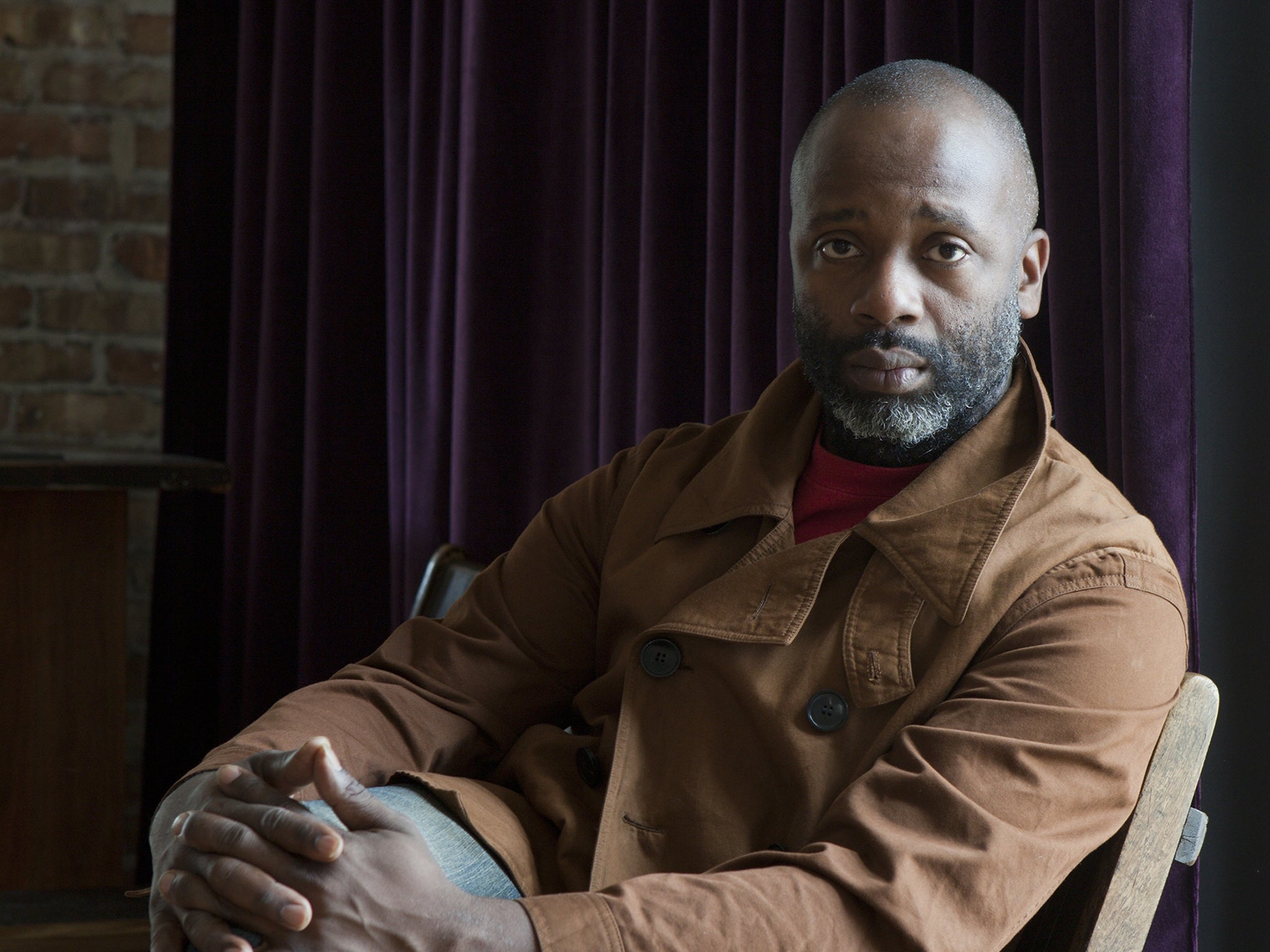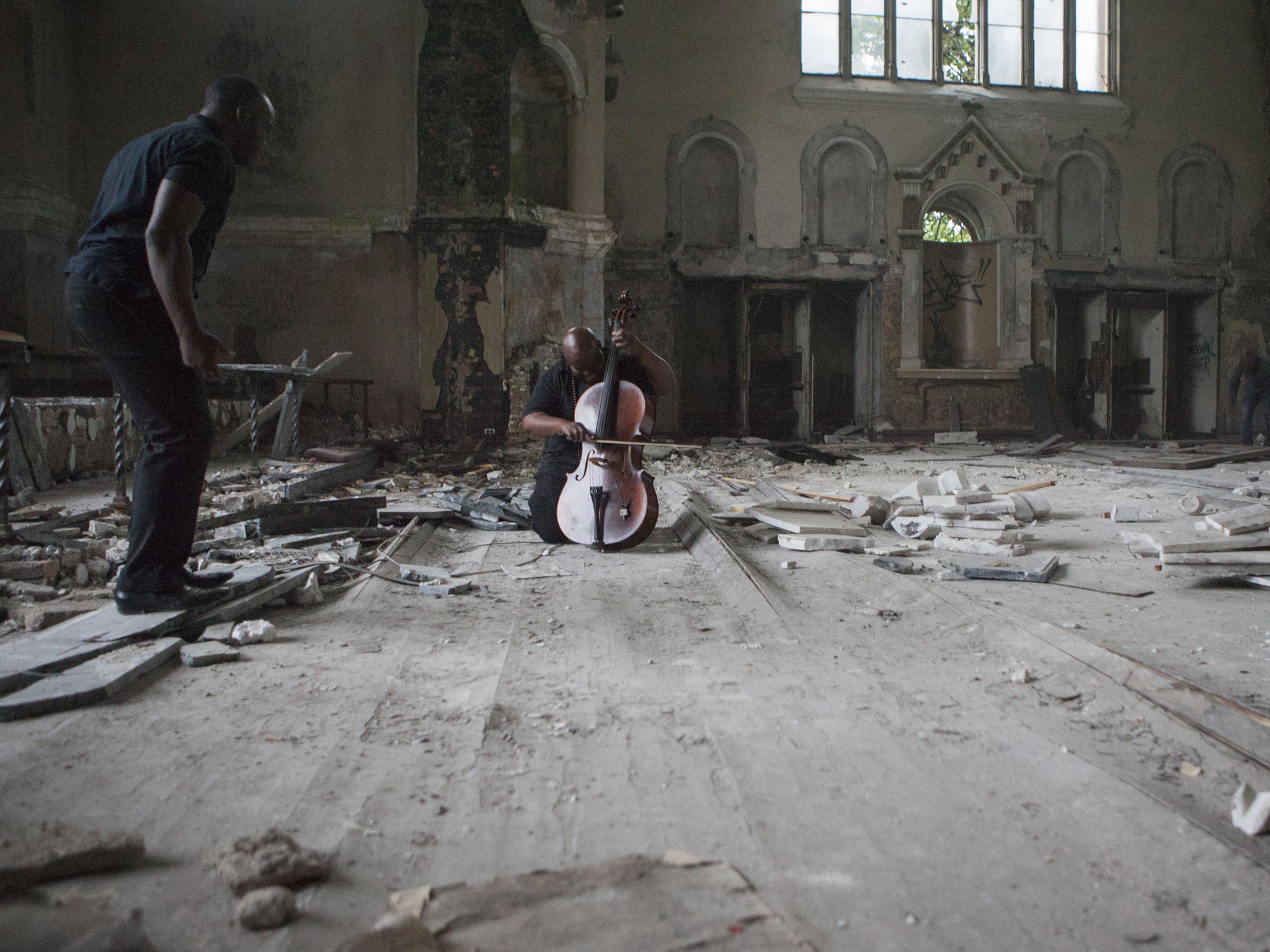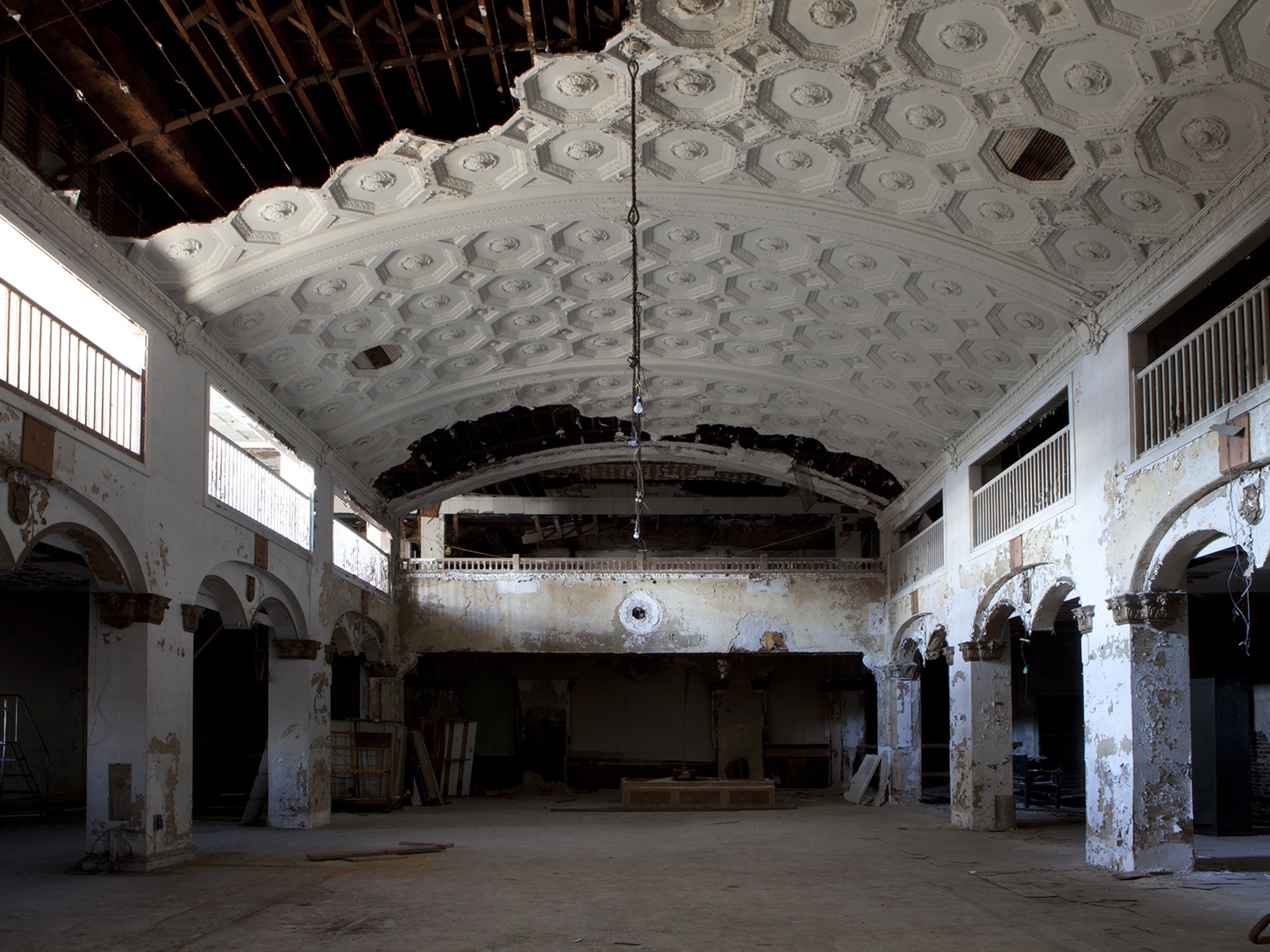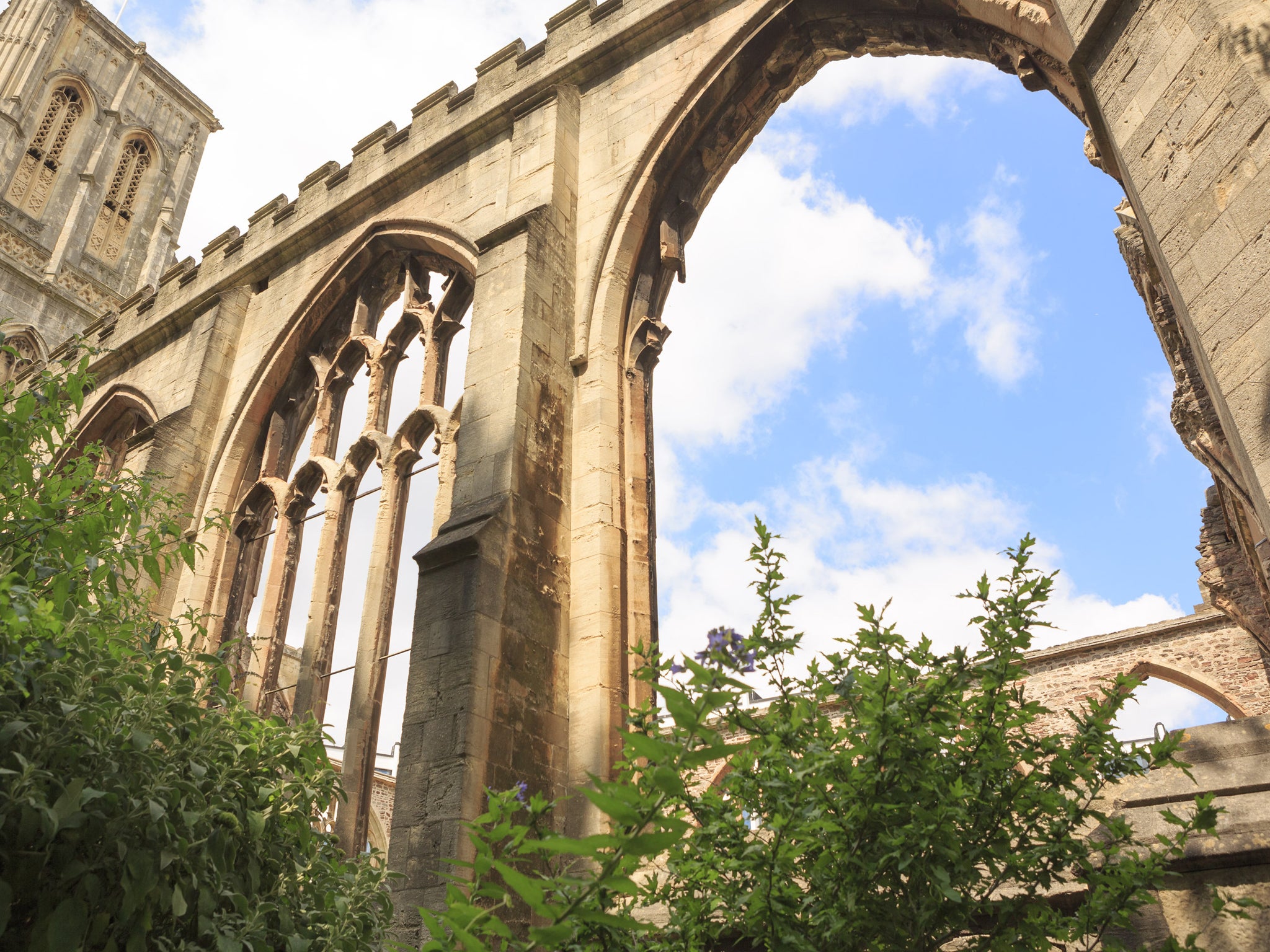Theaster Gates: 'If the city is ill, then I have a subject, a patient'
'I think the everyday gets between us and our voice'

Your support helps us to tell the story
From reproductive rights to climate change to Big Tech, The Independent is on the ground when the story is developing. Whether it's investigating the financials of Elon Musk's pro-Trump PAC or producing our latest documentary, 'The A Word', which shines a light on the American women fighting for reproductive rights, we know how important it is to parse out the facts from the messaging.
At such a critical moment in US history, we need reporters on the ground. Your donation allows us to keep sending journalists to speak to both sides of the story.
The Independent is trusted by Americans across the entire political spectrum. And unlike many other quality news outlets, we choose not to lock Americans out of our reporting and analysis with paywalls. We believe quality journalism should be available to everyone, paid for by those who can afford it.
Your support makes all the difference."Activate” is a word that peppers Theaster Gates’s conversation, as if all the inanimate objects in the world lay temporarily dormant, like a handful of seeds, waiting only for the benediction of creative rain to spring into life. Later this month, his work Sanctum will activate Bristol’s Temple Church, a structure with roots in the 12th century but which has been a roofless shell since bomb damage sustained in the Second World War. Gates has designed a simple steepled structure to be constructed within its walls to recreate the sacred space of the church and to act as a resonator, providing natural amplification. The activation per se will come from the voices of Bristol itself, with sung and spoken word performances of all kinds by those inhabiting or associated with the city ringing out 24 hours a day for 24 days.
“I think the everyday gets between us and our voice,” says Gates. “The need to just make ends meet, the constant hustle to maintain some adequate sense of normalcy keeps us from hearing ourselves. We hear our schedules, we hear our phones ring, but we rarely hear quiet.” Rather than a site of spectacle, Gates envisions Sanctum as part of Bristol’s Redcliffe neighbourhood’s daily round – a place of succour or inspiration that an office worker can slip away to on a lunch break, or a tired parent can use as sanctuary.
At 42, Gates has both ageless gravitas and levity of spirit. While his native Chicago provided both the (literal) material and subject for his socially and politically engaged early works, as his star has risen in the international arts firmament, he has been inspired by sites and themes ever further afield. Sanctum, however, will be his first public commission in the UK.

Temple is not the only church to have been the site or subject of a Gates work: Gone Are the Days of Shelter and Martyr (2014), shown at this year’s Venice Biennale, saw the artist use material remains from the demolished St Laurence Catholic Church (above) in the South Side of Chicago in a work that responded to the lack of support and investment in urban holy spaces in poor and black areas. Gates does not shy from the spiritual, and describes the feelings associated with it as “my wheelhouse, my wonderland. There are forms, patterns, rituals – things within the history of the sacred that still resonate ”.
We speak earlier this month, shortly after the opening of the Chicago Architecture Biennale, which saw the rapturous unveiling of the Stony Island Arts Bank, Gates’s latest multifaceted restoration project. It’s a Gesamtkunstwerk that has consumed much of the artist’s energy since 2012, when he purchased the vast derelict Neoclassical bank building in a downtrodden neighbourhood for $1 and used various creative means (including selling bond certificates carved into the ruined marble cladding at Art Basel) to raise the $3.5m required to turn it into an art space. “It was astonishing,” he says, sounding happy but exhausted. “Probably in Chicago it seemed like a miracle to take this building that had been vacant for 30 years, and which also represented the impossibility of recovery, and know that 1,400 people came through in a few hours, and people were populating that block in the name of culture.”
Stony Island Arts Bank will also hold a number of archives relating to African American history, and to that of Chicago in particular, ranging from old lantern slides, to the record collection of “godfather of house music” Frankie Knuckles, and “negrobilia” or racist objects, purchased by the late local financier Edward J Williams to take them off the market. Stony Island’s hybrid nature – as a site of art making, of scholarship, of assembly, of neighbourhood regeneration – echoes the scope of Gates’s activity as an artist.

Gates is still best known for the ‘real-estate art’ project he initiated in Chicago’s run down Dorchester neighbourhood in 2008 following the burst in the housing bubble that left 40 per cent of its buildings unoccupied. Gates funded renovation on two buildings (though the project has since expanded), through the sale of artworks made from materials salvaged from their interiors, and turned neglected sites into creative hubs. However his relationship with the community and the space it inhabits is a highly nuanced one. To refer to his work as activism or community art, as it often has been, is misleadingly reductive – rather he uses his status within and understanding of the artworld to realise projects that might enable new audiences, new actors to engage with art and art making alongside him. Acting in the spiritual footsteps of Joseph Beuys, he allows sites of non-elitist art production to become the places the art world looks to for its avant-garde.
In a new monograph published by Phaidon, Gates describes the city as his “medium”. “If the city is ill, then I have a subject, a patient,” he explains. His exhibition at London’s White Cube earlier this year brought the city of Chicago into the gallery, with a series of paintings and sculptures made using construction materials purchased from a neighbourhood hardware store that was going out of business. The access to and know-how connected to the physical stuff of construction is, for Gates something profoundly enabling, and by extension the loss of that is symbolic both of a gradual loss of control over our surroundings and, more broadly, our lives.
The son of a roofer, Gates is emphatically a skilled maker of things as well as a conceptualist. The Sanctum project is the first in which Gates has not been physically engaged in constructing the work. Instead, following his research visits to the city, the structure is being realised by the public art producers Situations, using the debris of Bristol’s pungent history as a site of trade and industry: materials reclaimed from an old sugar warehouse with links to the West Indies, a chocolate factory, and a Salvation Army citadel. “Working with Situations meant Bristol could become its own champion,” he says. “I just needed to create an opportunity and get out of the way.”

The stepping back and sharing of the platform for creative expression – and of “the shine and cash” available from involvement in the art world – is characteristic of Gates’s practice. Whether developing an exhibition, restoring a building, or creating music with his experimental ensemble the Black Monks of Mississippi, he allows space for others to be seen and heard. (When earlier this year, he won the Artes Mundi award for socially engaged art, he shared his prize money with the other shortlisted artists.) However, Sanctum is a larger than usual abnegation of control. “If in the past I was the conductor in the Opera House, in Bristol I feel like the architect of the Opera House,” he muses. “My principal job was to build Sanctum, and my secondary job was to provide guidance on how it might be used.”
Gates sees this as the first in a new series of works dedicated to the amplification of the human voice and the connections between architectural space and sound. Explicitly inspired by Bristol’s rich musical heritage, the programming of sound for Sanctum will cover everything from poetry through to gospel choirs and celebrated bands from the area. The dimensions of the space are intended to provide an intense and relatively intimate auditory experience for a maximum of 50 people at any one time (fewer if a large choir is performing). While a list of participants will be released closer to the time, no timings will be provided. So, what of the Black Monks of Mississippi? Will Gates, an impassioned singer, be performing too? “We’re not saying yes, but it’s hard to keep me off a mike!” he laughs. “Give me a reverberant room and it’s hard not to do something – I’ve got to try it out!
Theaster Gates’s ‘Sanctum’ at Temple Church Bristol runs from 29 Oct to 21 Nov (sanctumbristol.com). ‘Theaster Gates’ is published by Phaidon on 2 Nov
Join our commenting forum
Join thought-provoking conversations, follow other Independent readers and see their replies
Comments